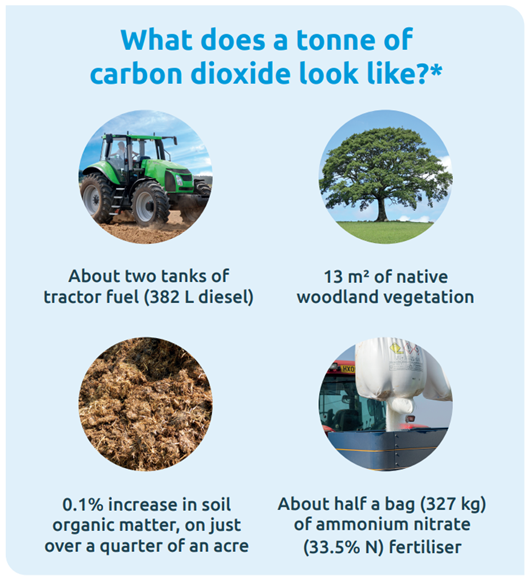- Home
- Markets and prices
- Carbon markets
- Carbon markets FAQs
Carbon markets FAQs
Here are frequently asked questions for farmers and landowners about carbon markets.
Last updated 15 August 2023
Companies have legal obligations to cut their carbon emissions. To meet these mandatory targets, they have two choices:
- Reduce their own carbon footprint
- Pay someone else to cut their carbon usage
If a farmer is able to reduce or sequester carbon emissions, there is an opportunity to sell carbon credits, which are traded in systems called carbon markets.
Read more on Why carbon markets matter to your business
Carbon markets present a potential income stream for farmers, alongside contributing to global commitments such as the Paris Agreement and targets set by the NFU.
Farmers have their own obligations to reduce carbon emissions. But there is an opportunity to sell carbon credits if it is a suitable option for the business.
Read more on Carbon markets: why should I care?
Offsetting is where a company may invest in an environmental project, possibly farm-based, to offset its own emissions.
Insetting is when companies invest in carbon reduction projects within their own supply chain. By engaging in carbon insetting, companies are investing in making their own products, practices and supply chains more sustainable.
Read more on Carbon insetting vs carbon offsetting: what you should know
The UK has a compulsory market and voluntary market.
The compulsory market is government-regulated. Companies have a legal limit to their emissions but can buy or sell their allowances with other companies – similar to the old milk quotas.
The voluntary market is where companies can choose to offset their emissions by buying credits generated by, for example, carbon-sequestering projects. This is where most opportunities for farms exist.
Read more on Understanding the two types of carbon market
Schemes vary in many ways, including:
- Contract length, cost and if buffers are held
- Payments for sale of carbon credits
- Early payout schemes
- Whether soil analysis is a requirement
- Monitoring method
- Minimum requirements, such as min./no-till practices
Read more on Schemes in the carbon market: what to look out for
Credits from compulsory markets are sold at much higher prices than voluntary markets.
Compulsory schemes, such as the UK Emissions Trading Scheme (UK ETS), are regulated as the Government sets a limit on pollution levels, and credits are traded for the amount of carbon emissions over or under this cap. Agriculture does not fall under the UK ETS and instead voluntary schemes can be used.
Regulated voluntary schemes include the Woodland Carbon Code (WCC) and the Peatland Carbon Code (PCC).
There are also unregulated voluntary schemes that allow farmers to receive money for sequestering carbon on agricultural land.
Read more on Price disparities between carbon markets
Within the carbon market, there are both regulated and unregulated schemes available for generating additional income for sequestering carbon.
In regulated markets, the Government establishes a regulatory body, which has the function of ensuring compliance within annual rules and limits. The regulator also determines the minimum price for carbon credits.
At present, the two main regulated voluntary schemes in the UK which affect land managers are the Woodland Carbon Code (WCC) and the Peatland Carbon Code (PCC).
Read more on Understanding regulated carbon markets
The Emissions Trading Scheme (ETS) is focused on UK industry and does not cover agriculture.
But where the compulsory scheme is linked to voluntary offsetting schemes, there may be opportunities for farmers. It is good to have a basic understanding of compulsory schemes as they are a significant part of overall carbon markets, and pricing on these markets may influence prices on the voluntary markets.
Read more on Why the regulated UK Emissions Trading Scheme could impact farmers in the future
All calculators do similar things and show similar trends but produce slightly different end results.
The best action is to pick one and stick with it so that a baseline and consistent record can give a better indication of changes to soil carbon stocks on-farm following new practices being adopted.
Read more on Carbon footprint calculators − what to ask to help you choose

The exact amount of CO₂ emitted or sequestered by an activity will vary depending on many different factors. But here are a few examples of what it could look like:
- Using just under two tanks of fuel in a tractor
Based on a 200 L fuel tank and data from the Government’s Forest Research body on the CO₂ emitted by diesel when combusted (with 382 L diesel producing 1 tonne of CO₂) - 13 m² of native woodland
According to a Natural England report, a 100-year mixed native broadleaf woodland contains 203 t of carbon per hectare in just the vegetation. This is equivalent to 744 t of CO₂, meaning just 13 m² of woodland vegetation will have sequestered 1 t of CO₂ – and even more carbon will have been captured in the soil - A 0.1% increase in soil organic matter on just over a quarter of an acre
According to the Farm Carbon Toolkit, increasing the soil organic matter (SOM) of 1 ha by just 0.1 percentage points (e.g. 4.2% to 4.3%) can sequester 8.9 t of CO₂ per year (30 cm depth, 1.4 g/cm3 bulk density). This is equivalent to 1 t of CO₂ sequestered in just over a quarter of an acre (0.28 ac) - Making and using just over half a bag of ammonium nitrate (AN) fertiliser
Based on a 600 kg bag and using data from Fertilizers Europe on the emissions footprint for producing and using AN (33.5% N). By these figures, making and using 327 kg produces GHGs equivalent to 1 tonne of CO₂ (CO₂e)
Please contact the carbon team by emailing carbon.markets@ahdb.org.uk with any more questions.

